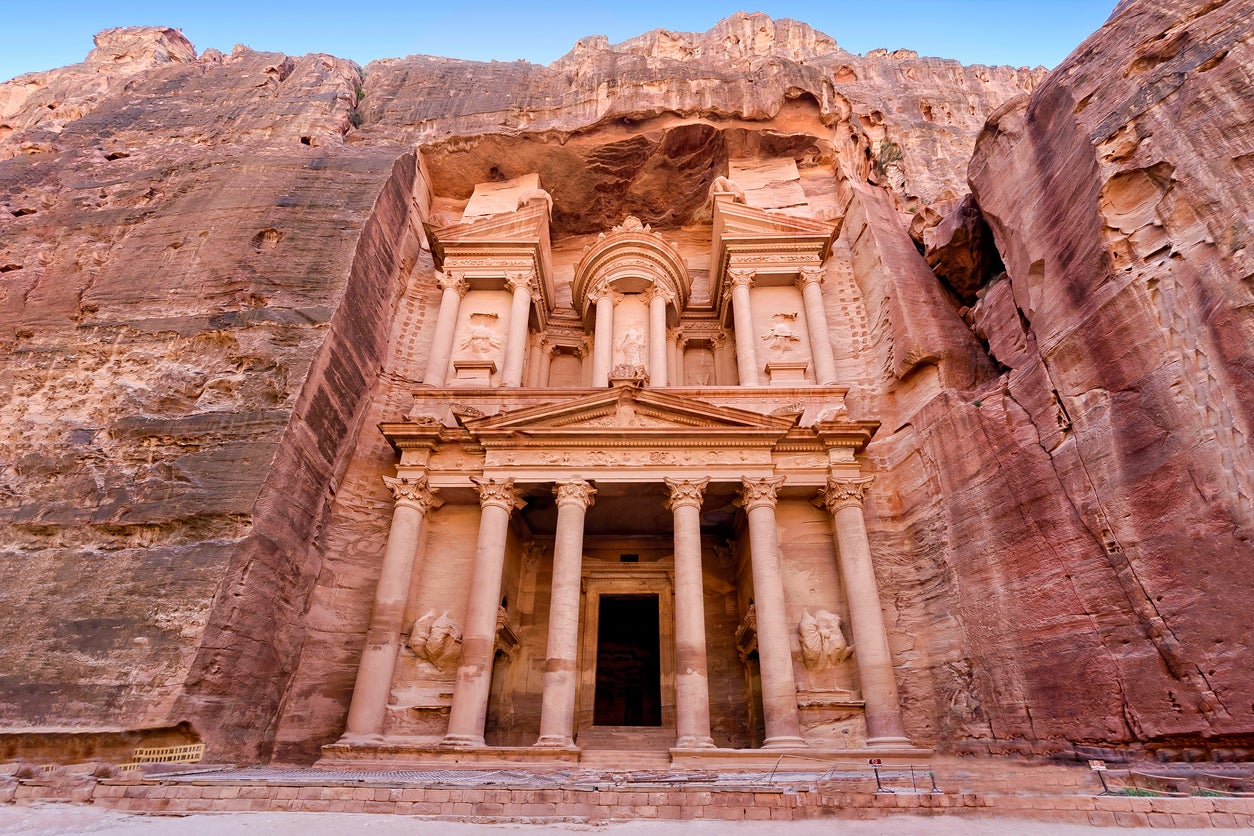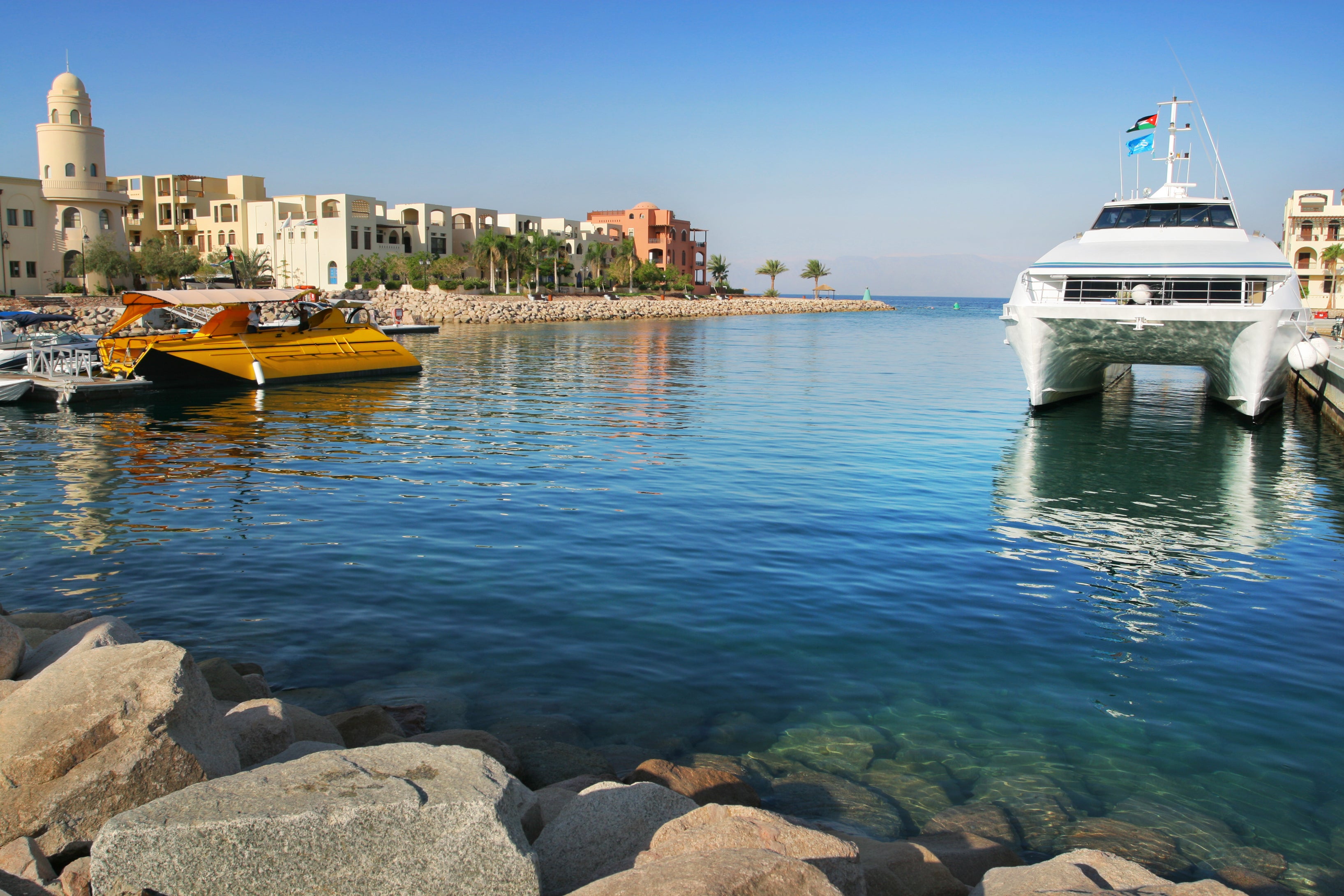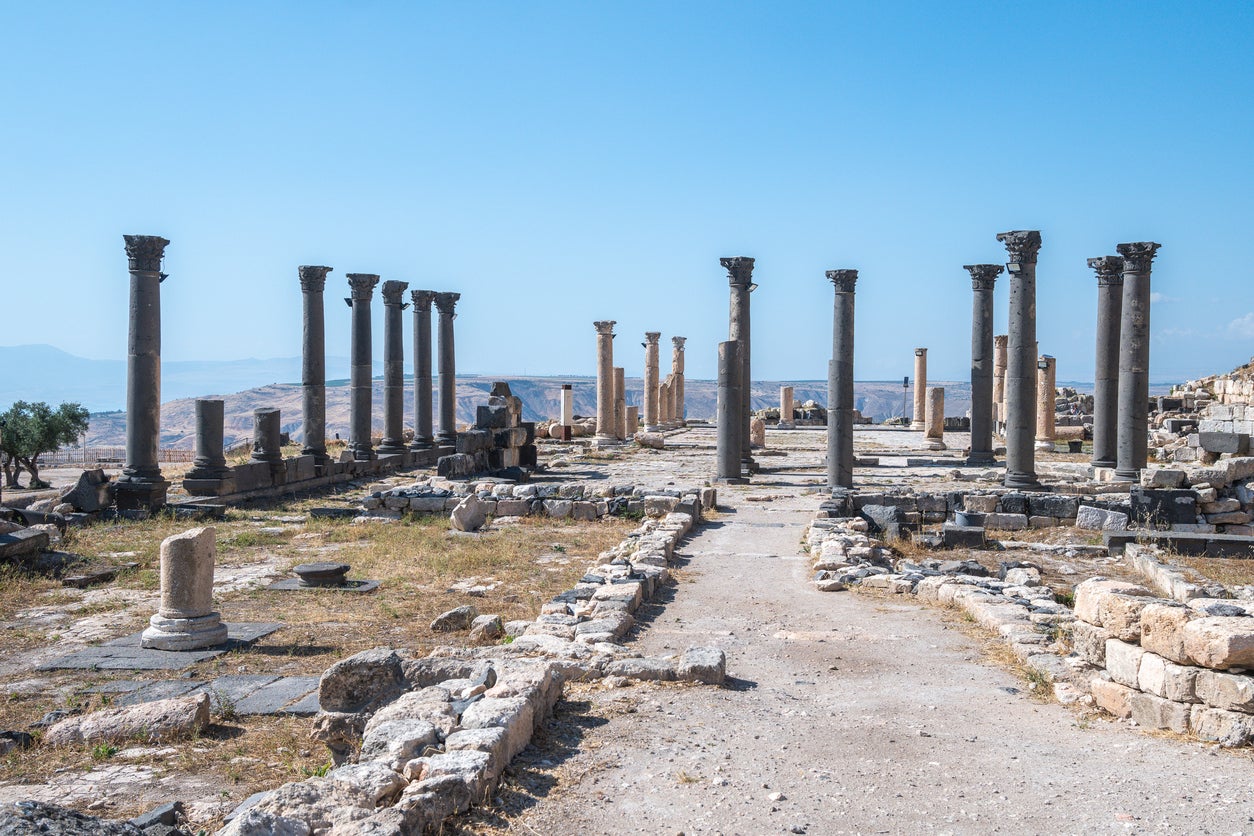
Jordan can often be overlooked as a tourist destination in the Middle East; instead, places like Dubai tend to hog the limelight. But look closer, and you’ll see this needn’t be the case. Jordan punches well above its weight with things to do on holiday. There are ancient Roman and prehistoric cities to explore, hot springs to take a soak in, wildlife reserves in which to spot hundreds of animals and so much more.
The country’s rich history shines through, whether you’re peeping at a 6th-century mosaic map or walking around one of the six Crusader castles. If it’s beach resorts you’re looking for, the southern coast overlooks the Red Sea and is home to coral reefs and an abundance of fish to see whether snorkelling or sailing on a boat. Those who want something a little more active, like hiking and canyoning, are in luck.
If you have an upcoming trip or fancy some Jordan travel inspiration, we’ve rounded up the best things to see and do.
Read more: The ultimate guide to Amman, Jordan
Explore ancient attractions in Amman

The Jordanian capital of Amman is home to several ancient Roman and Greek sites, including the ruins of a citadel and a well-preserved amphitheatre. This city dates back to 7250BC, and its impressive landmarks are well worth a visit. Soak up a view of the old town from Jebel Al Qala’a hill, where Amman Citadel is situated and where you’ll also find the archaeological remnants of a Byzantine church and Roman temple.
Meanwhile, the Roman Theatre is at the base of nearby Jabal Al-Joufah hill, and this east Amman tourist spot boasts a whopping 6,000 seats.
Take a dip in the Ma’in hot springs

The Ma’in hot springs are a selection of 63 natural mineral springs and waterfalls set between Madaba and the Dead Sea. Also known as Hammamat Ma’in, the geothermal water is warmed by lava fissures below the ground; it can reach 60C and is thought to have well-being benefits. As well as the hot springs, which are free to visit, you can visit Ma’in Hotel and Spa either by buying a day pass or booking a stay.
Read more: Holiday destinations our travel experts are booking in 2025
Spot wildlife at Dana Biosphere Reserve

If you’re looking to spot wildlife, Dana offers 320 square kilometres of rolling mountain greenery and desert landscape and is the largest nature reserve in Jordan. It’s rich with flora and fauna, and records indicate there are 190 bird species, 37 mammal species and 700 plant species living there. Plus, 25 endangered bird, mammal and reptile species have been seen, including the spiny-tailed lizard and the Syrian wolf. For those who’d like to stay in the protected area, accommodation options include Dana Eco Camp.
Discover prehistoric city Petra

The ancient city of Petra is a Unesco World Heritage Site and was built over 2,000 years ago. Located between the Dead Sea and the Red Sea, it is partly built into the red sandstone and features both a temple and several tombs. Once the capital city for an Arab tribe, the Nabateans, Petra was also a base during Hellenistic and Roman times. Take a walk around the walled city’s ruins as part of a guided tour, and marvel at this archaeological masterpiece.
Read more: British archaeologists discover hidden tomb under city of Petra
Visit a Crusader castle

There are six Crusader castles in Jordan, constructed during the 12th century, with Kerak Castle being one of the largest and most well-preserved. This medieval fortress is located 80km south of the capital city and is on an old trade route road, the King’s Highway. The seven-level castle offers an excellent viewpoint (it sits 1,000m above the Dead Sea) and overlooks the Wadi Mujib Valley. Its architecture combines Arab, European and Byzantine influences, while the walls are built from volcanic rock. This impressive castle is open to the public, so you can walk through passageways, towers, kitchens, a chapel and even the dungeon.
Hike through Wadi Rum

Wadi Rum is a protected area in south Jordan, with a desert landscape stretching across 74,000 hectares. Expect to see a combination of mountains and canyons on a hike, and a 75-mile trail should you be seeking extreme adventure. First inhabited by humans over 12,000 years ago, there are rock carvings depicting early inscriptions. The desert is near the Saudi Arabia border and Lawrence of Arabia passed through more than a century ago.
Read more: Discovering the secrets of Jordan with our TravelSmart guide
Go diving in the Red Sea

Port city Aqaba, in southern Jordan, is packed with beach resorts; they’re ideal for a diving or water sports holiday. Aqaba Marine Park is a popular place from which to dive into the Red Sea, as it offers comprehensive facilities and has 21 sites. The Red Sea’s marine life includes over 127 forms of coral and 450 fish species, so snorkelling and glass-bottom boat trips are available at the park, too.
Follow the Wadi Mujib canyon trail

Wadi Mujib is a canyon positioned along the Mujib River in southern Jordan, about 56 miles outside of Amman. In the mountains above you’ll also find the Mujib Adventure Centre, where you can follow the Siq trail along the river canyon. This experience allows you to – quite literally – soak up your surroundings while navigating the water and rocky sandstone cliffs. Expect to see waterfalls as well as natural pools, with depth depending on recent rainfall.
Read more: The winter sun destination you hadn’t thought of – for stunning beaches and no jet lag
See the Madaba mosaic map

Madaba is known as the City of Mosaics, thanks to the Madaba Map. It was created in the 6th century and what remains today is thought to be around a quarter of what was originally there. This beautiful cartography once depicted an area covering Lebanon, the Nile, the Jordan Valley and the Mediterranean Sea, and is the oldest known map showing the Holy Land. You can still catch a glimpse of the Jordan Valley section when visiting the Byzantine St George’s Church, where it lives.
Walk through Roman city Jerash

Jerash takes the crown as Jordan’s largest Roman site. Its origins date back over 6,500 years and the 200-acre site includes remains of Hadrian’s Arch, which was built for the emperor himself, as well as the Temple of Zeus and 56 Ionic columns. The city is 48km from Amman, so you could easily explore both within the same trip.
Read more: This boho enclave is the perfect alternative to Egypt’s touristy Red Sea resorts
Relax at a beach club in Aqaba

As the only coastal city in Jordan, Aqaba works hard to help travellers to relax by the Red Sea. The Saraya Beach Club and Mama Gaia Beach Club are some of the many luxury havens along the shores, offering shady loungers, cabanas, beach and pool areas, and excellent cuisine with cocktails on hand. While some beach clubs are oriented to be kid-friendly, if all that sunbathing has made the family a bit restless, Jordan’s largest waterpark, Saraya Aqaba is only a stone’s throw away, featuring over 25 rides and family-friendly eateries.
Transport from Roman to Ottoman history at Umm Qais

In northwestern Jordan lies Umm Qais, regarded by many history buffs as a two-for-one deal on magnificent historical Roman and Ottoman offerings. Perched atop a hill overlooking the Jordan Valley and the Sea of Galilee, the site is known for its dramatic black basalt and white limestone ruins standing triumphant against the test of time.
Umm Qais is a mixture of Roman ruins, with rock-cut tombs, theatres and a basilica, as well as an Ottoman-era village with relatively intact buildings, allowing visitors to experience the area through various centuries.
Read more: Why you should escape Dubai for Ras Al Khaimah, the UAE’s ‘other emirate’







